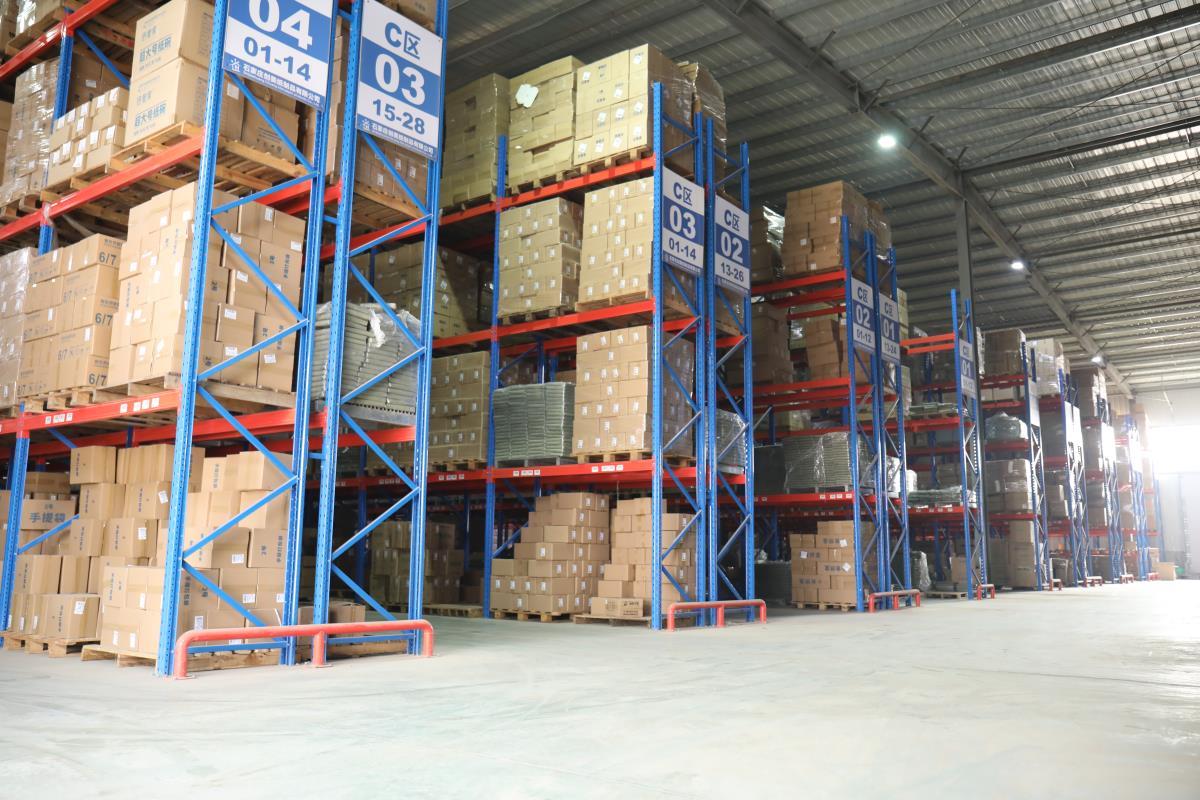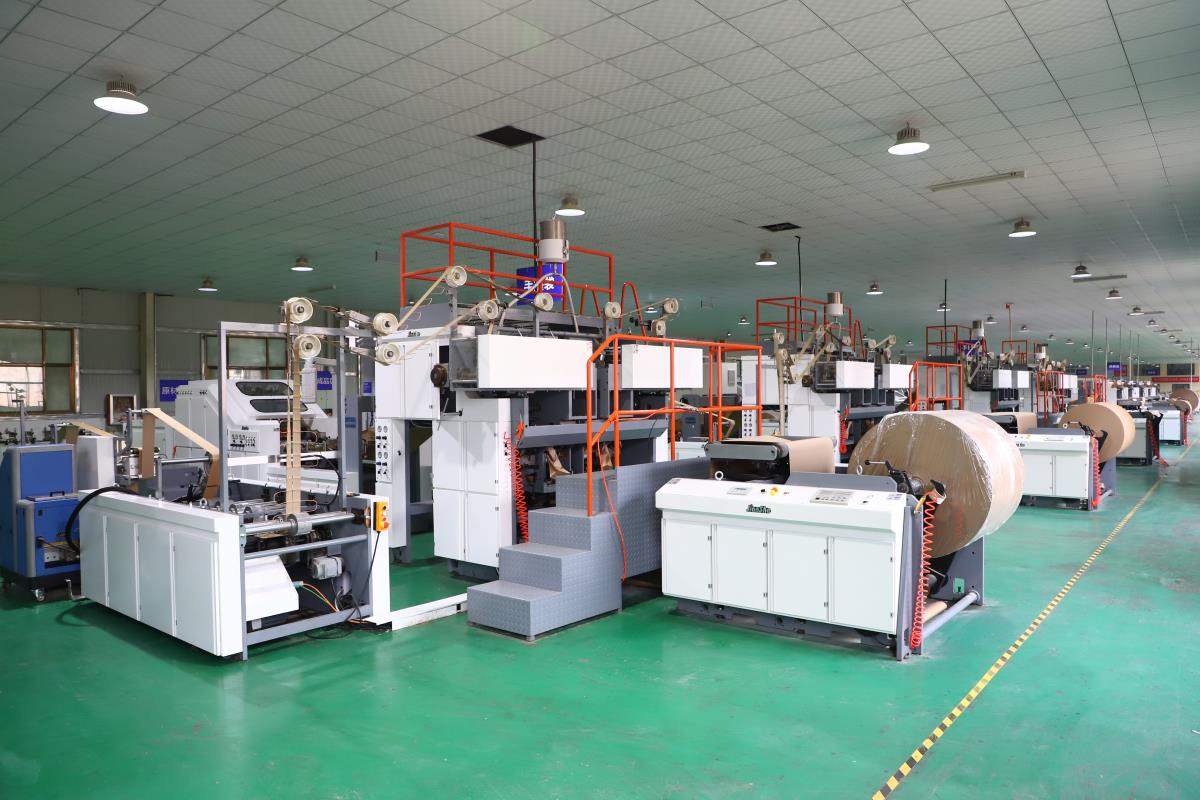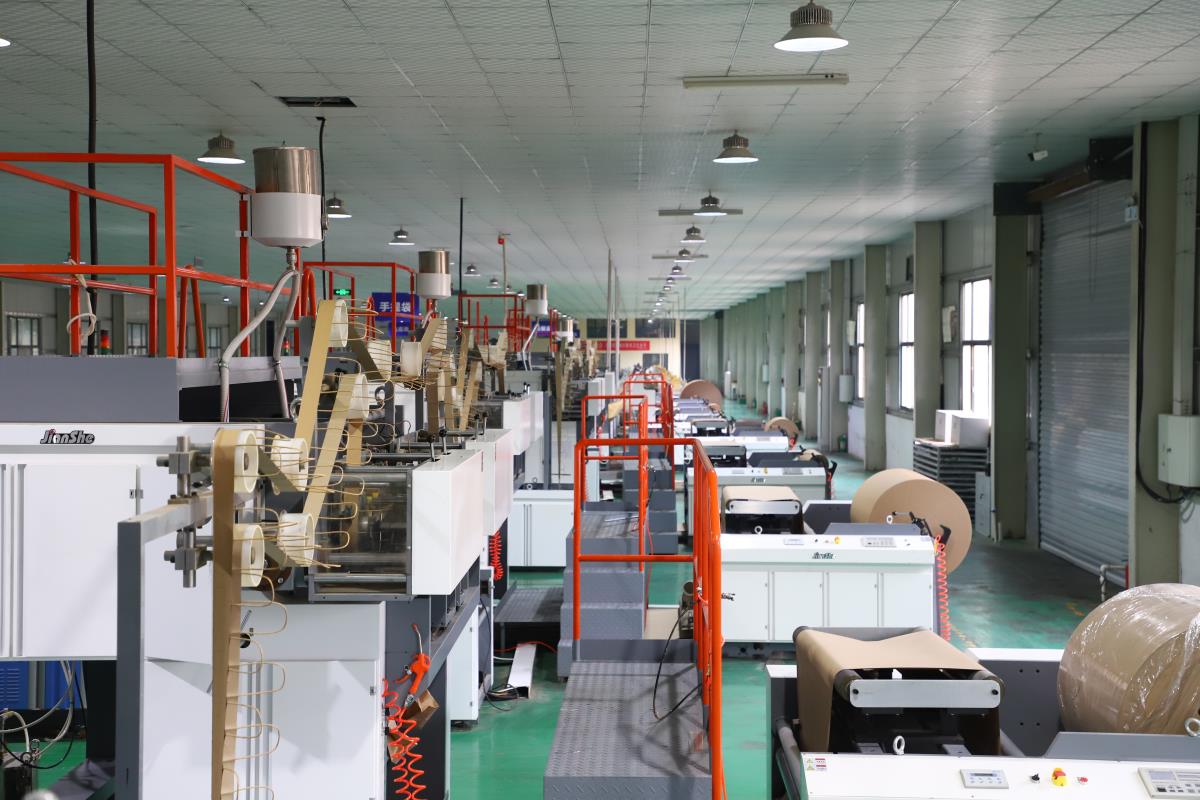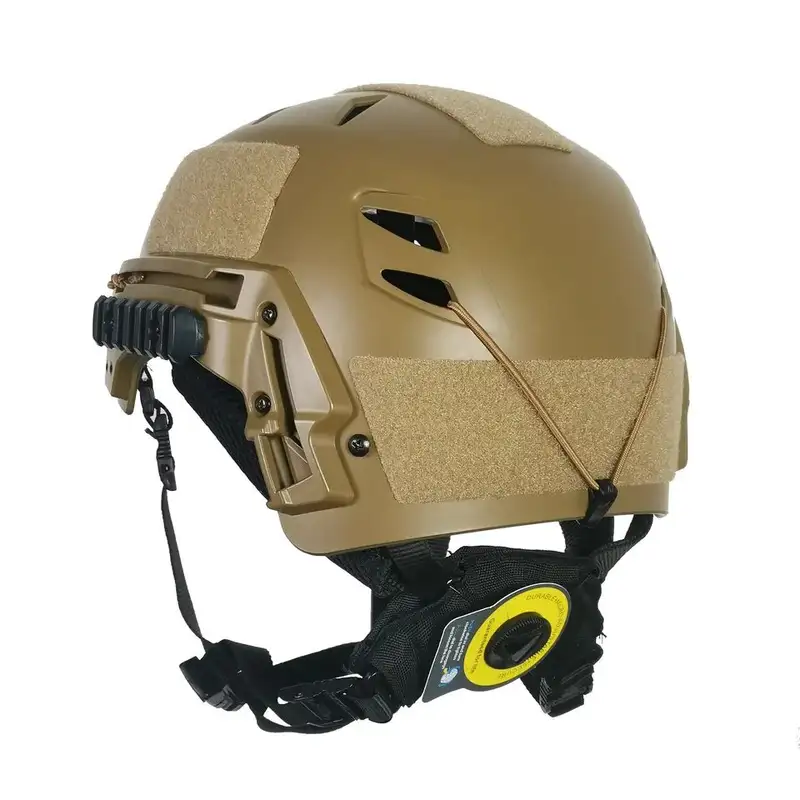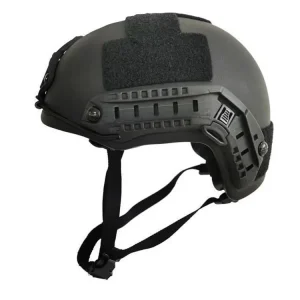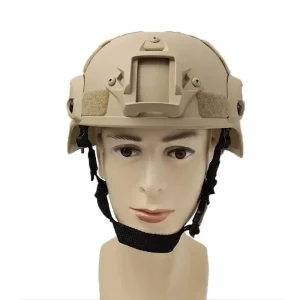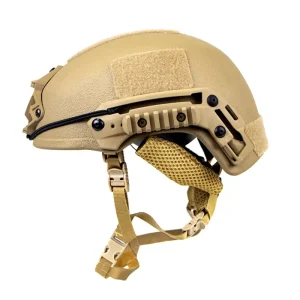A military helmet, often simply referred to as a combat helmet, is a specially designed headgear worn by military personnel to provide protection for the head during combat and other military operations. These helmets are designed with the primary goal of safeguarding soldiers from various threats, including ballistic impacts, shrapnel, and environmental hazards. Here are some of the key features and functions of military helmets:
- Ballistic Protection: Military helmets are constructed to withstand and dissipate the force of ballistic impacts, such as bullets, shell fragments, and projectiles. They typically consist of a hard outer shell made from materials like Kevlar or advanced composite materials.
- Suspension System: Inside the helmet, there is a suspension system that helps distribute the force of an impact and provides comfort to the wearer. It allows for adjustment to ensure a secure fit.
- Camouflage and Accessories: Military helmets often come with accessories like camouflage covers and mounts for night vision devices, communication equipment, or other tactical gear.
- Visor or Face Shield: Some military helmets feature an integrated visor or face shield to protect the wearer’s eyes and face from shrapnel and environmental factors.
- Ear Protection: Ear protection and communication systems can be integrated into the helmet to allow soldiers to communicate while maintaining protection.
- Environmental Protection: Military helmets may include features to protect against environmental hazards, such as chemical, biological, radiological, and nuclear (CBRN) threats.
- Weight Considerations: Helmet weight is a crucial factor in design, as it must provide protection without causing undue strain on the wearer.
- Safety Standards: Military helmets must meet stringent safety standards and undergo extensive testing to ensure their effectiveness in protecting soldiers.
The design of military helmets has evolved over time to adapt to the changing nature of warfare and the various threats faced by soldiers. The goal is to provide optimal protection while maintaining comfort and mobility, and innovations in materials and technology continue to drive improvements in helmet design.
Military helmets are a critical component of a soldier’s personal protective equipment (PPE), serving to safeguard their head and, by extension, their overall well-being during combat operations. These helmets play a pivotal role in reducing the risk of head injuries and increasing the survivability of military personnel in the field.
